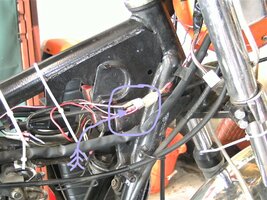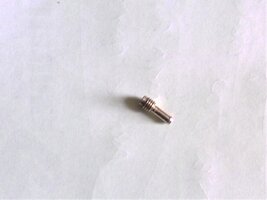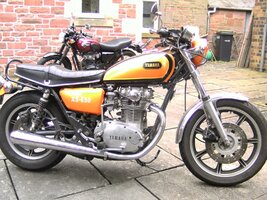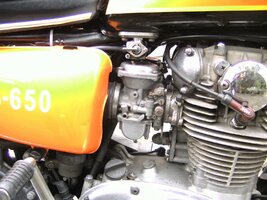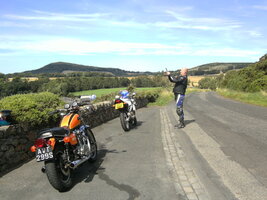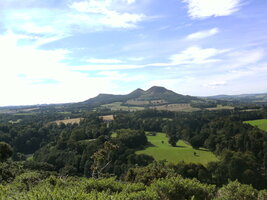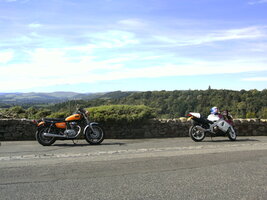The whole system is different from what you have in the USA. We have a nation-wide system.
When a vehicle is first registered in the UK, the DVLA* issues a registration number and that stays with the vehicle for all it's life. In nearly all cases, the first registration occurs when the vehicle is sold new from a dealer and the dealer has a number plate made for the vehicle. Well, two plates for a car or van or WHY. The annual tax is the responsibility of the owner. When the owner sells the vehicle, can apply for a refund from DVLA if the tax has not expired. The new owner pays tax using that original registration number. But the registration number stays with the vehicle. You can think of the reg number as the vehicle's name for official purposes. The vast majority of vehicles have the same plastic plates until scrapped. In the UK, we don't have prisoners making number plates . . .
Of course, there are a few minority cases. If you bring a used vehicle into the country, such as Miss November was imported from Canada at about the end of the last century, DVLA requires paperwork about the origin of the vehicle and then issues an 'age-related' registration number. In Miss November's case, the S suffix indicates manufacture between August 1977 and July 1978.
Another exception is when the owner wants to keep a 'cherished number' and transfer that to another vehicle - that can be done by DVLA for a small fee and has grown into a business of buying and selling personalised number plates. My W800 has a personalised number W800RDB where RDB is my initials - Mrs bought me that number, a fantastic coincidence it had come available for sale.
Plates are yellow rear and white front but bikes don't have front plates these days. ** Back in the old days, all number plates were black with white or silver letters. A few years a ago, it was decided that vehicles registered as 'historic' could have old-fashioned black number plates. Historic just means if your vehicle is over forty years old, you apply to DVLA for your vehicle to be classed historic which makes the annual tax zero - Hooray! And you no longer have to submit the vehicle for an annual MOT inspection. There are no restrictions on how you can use a historic vehicle, no silly annual mileage limits for example.
After they ran out of alphabetic suffixes, in 1983 they moved to a single-letter prefix. The H prefix on the Gilera indicates manufacture between August 1990 and July 1991. This century, they've changed that again but too much information . . .
If you are stopped by a Police Officer, he or she has probably already done a PNC check - the Police National Computer - which reads the DVLA dB so by the time the Officer asks your name, they already know the name of the registered keeper, the tax status of the vehicle, whether it is insured, has valid MOT, has been officially scrapped, owner is wanted for a crime and probably a number of other facts.
* Driver& Vehicle Licencing Agency, though they change the name from time to time. DVLA is in Swansea in Wales and people say 'Swansea' for short.
** Long ago when I was a wee kiddy, motorbikes had front number plates, blade shaped, sat on the front mudguard (fender) but it was shown that if a male politician was struck by a moving motorcycle his testicles might be cut off so politicians decided bikes don't need a front number plate.
